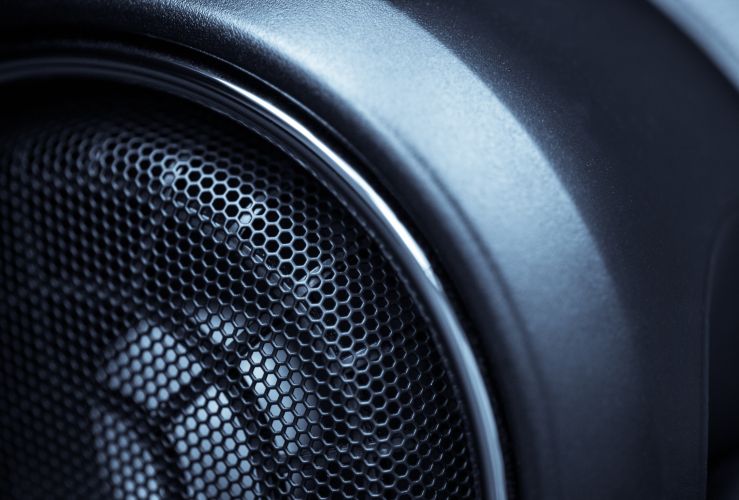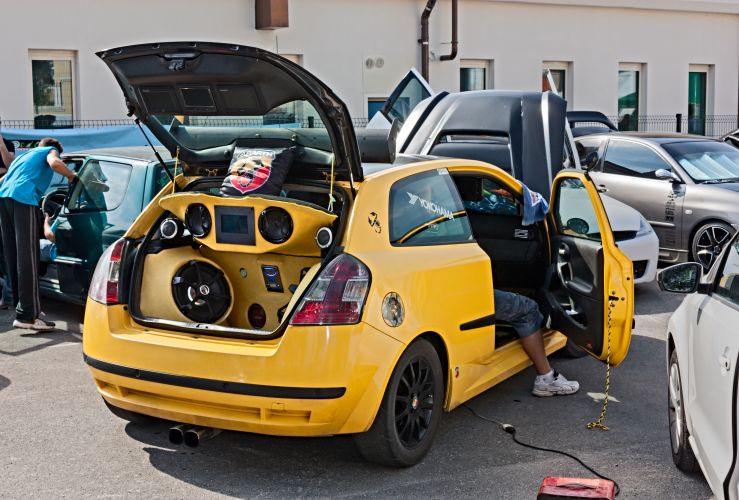
If you've overheard car-audio enthusiasts discuss the technology involved in automotive sound, you'd be forgiven for thinking it’s a very complex subject. But in reality, the basics are straightforward.
A car's sound system comprises a head unit, commonly called a radio or stereo which provides the audio signal; an amplifier, to boost the power of the head unit's signal; and speakers, which deliver the sound to the cabin.
That said, how these three components connect is important; a high-end stereo might deliver disappointing sound if it’s hooked up to a mediocre amp, while a top-notch amp will be a waste of money of married to a standard set of full range speakers.
And there are other questions to mull. How much you have to spend on upgrades is probably a key issue. Do you have the cash for a full upgrade? Do you want to build a system progressively as funds become available? Do you want to replace your factory-installed unit?
Upgrading stereos in newer cars with integrated infotainment systems can be tricky. You may even consider enlisting a specialist for this task.
The fastest route to better car audio is to upgrade your factory speakers to premium units. Higher-end speakers are made from better quality components and will deliver better sound. They will last longer too.
A home sound system often features separate woofers, tweeters and midrange speakers - but in a car, these components take up a lot of space. Most factory stereos are fitted with smaller 'full range' speakers which do not reproduce sound to the same quality as your home system. However, investing in component speakers will crank up the quality (and the budget).
Installing an amplifier that harnesses speaker level inputs is the next step in enjoying amazing sounds behind the wheel. If your factory head unit lacks preamp outputs, you'll need to choose an amp with speaker level inputs (most amps use line level inputs).
Doing this may sound complex, but it will prevent any distortion when you crank up the volume.

If you take the amplifier route, you can then add a sub-woofer, which will treat your eardrums to much richer bass. Alternatively, you can invest in a digital sound processor to boost the sound quality from your speakers.
There are a myriad stereos on the market, which can make replacing your factory-installed head unit somewhat confusing. But if you really want better sound, it's worth persevering.
You'll need a head unit that is able to power your speakers, or alternatively, one with preamp outputs and an amplifier that can power your speakers effortlessly.

Love your bass? You can either add an amplifier and a sub-woofer, or a standalone powered sub-woofer. You'll have more options if you plum for a sub-woofer with an amplifier, but a powered sub-woofer is the simpler choice.
The very easiest way to get your bass fix is to buy a combined sub-woofer and amp with speaker-level inputs so you can connect it your factory-installed stereo, or a brand new head unit.
Love noise? You're still looking at investing in an amplifier. If you keep your factory head unit, you'll probably need an amp with speaker level inputs. It’s worth noting, however, that some high-end factory head units feature line level outputs.
There's a real risk of overpowering your speakers when you fit a powerful amplifier, so investing in new speakers is prudent if you are truly dedicated to ear-splitting volume.
Concerned that tinkering with your stereo will harm the resale value? Maybe you're leasing the car and want to be able to revert it to the factory set-up when the time comes? Locate the wiring harness for your car. This will connect to the factory wiring, so it won't be necessary to cut any stereo system wires.
If you're lucky, your car's harness will enable you to plug in a new head unit, which means you can swap out your stereo as and when required.
Having a new car audio system fitted by a professional service is the quickest way to upgrade. A professional will offer advice on the best system for your needs and budget and then install it for you. If you lack knowledge on available systems, or don’t have the time or inclination to fit your own set-up, this could be a good option. On the other hand, the labour involved could significantly increase how much you pay - and you may even be advised to buy a higher-end (and thus more costly) system than you actually need.




